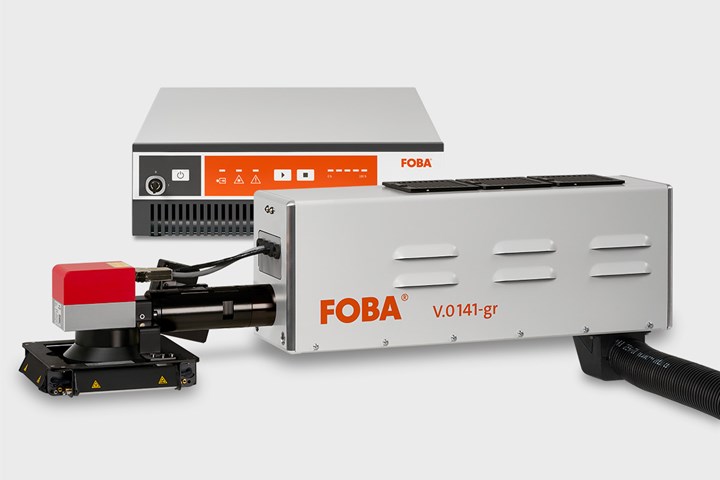Low-Heat Green Laser Targets Delicate Substrates for Direct Part Marking
Foba has developed a new 532-nm-wavelength green laser marking system that enables optical part inspection and validation of marked contents as well as the automated and precise positioning of the laser mark.
Foba V.0071-gr 7-watt laser marking system is classified laser protection Class 4 and must be equipped with a housing or integrated into a marking unit. Photo Credit: Foba
Foba Laser Marking + Engraving has developed a 532-nm-wavelength green laser marking system which offers new possibilities for industrial direct part marking. Supplemented by Foba’s comprehensive marking workflow, the low-heat laser applies perfect marks on materials with high absorption properties. Such materials include white, transparent or red plastics as well as highly reflective metals. The green laser completes the range of laser wavelengths in Foba’s portfolio of marking systems.
A significant increase in marking speed and marking quality on previously insufficiently markable materials are the main benefits of Foba’s green laser. Affected materials include plastics like ultra-high-molecular-weight polyethylene (UHMWPE), high-density polyethylene (HDPE) or poly(methyl methacrylate) PMMA for which additives might no longer be necessary, as well as glass or shiny substrates. Compared to other laser types like UV or fiber, the green laser is said to show better marking results while achieving optimized marking speeds.
The application of the green laser marker can be facilitated using Foba’s laser marking workflow with camera and mark alignment software. “The optical part inspection and validation of marked contents as well as the automated and precise positioning of the laser mark have long been valued by our customers as a reliable and safe workflow solution,” Philipp Febel, director product management at Foba, says.
The Foba V.0071-gr and Foba V.0141-gr green laser marking systems close the gap between UV (355 nm) and fiber (1,064 nm) laser markers. The combination of relatively high laser power and a vanadate source enables extended applicability and high speed.
The new marking laser is available with either 7- or 14-watt laser power variations. It can flexibly be integrated into production environments due to a smaller marking unit (compared to the UV laser), a broad range of available interfaces and five possible marking field sizes.
Related Content
-
Laser Welding Versus Micro Welding
The latest battle in finely detailed restoration/repair of mold materials.
-
How to Use Diffusion Bonding to Optimize a Mold’s Thermal Performance
Joining dissimilar metals has tremendous potential for conformal cooling, but to successfully use diffusion bonding, a mold builder must understand the complexities of the interface and its effect on the chemical and thermo-mechanical properties of the bond.
-
Machine Hammer Peening Automates Mold Polishing
A polishing automation solution eliminates hand work, accelerates milling operations and controls surface geometries.















.png;maxWidth=300;quality=90)

